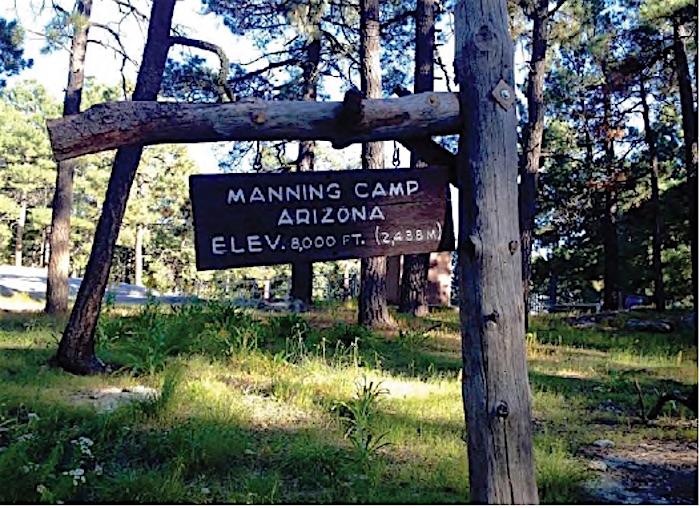
Stay cool this summer in Saguaro National Park ... head up to Manning Camp/Friends of Saguaro
Summer in the Sonoran Desert is HOT — as daytime temperatures regularly exceed 100 degrees from May through September — but visitors still have a lot to enjoy at Saguaro National Park, just outside Tucson, Arizona. Desert hiking in extreme heat can be hazardous, but savvy visitors know they can hike early, pace themselves, rest often, and drink at least one gallon of water per person per day — while using sunscreen and wearing a hat with a full brim.
Experienced hikers can opt for cooler temperatures in the higher elevations of the Rincon Mountains, trekking 9 miles up to Manning Camp (elevation 8,000 feet) in the heart of the Saguaro Wilderness (and bounded on three sides by the 38,590-acre Rincon Mountain Wilderness Area within the Coronado National Forest). Manning Camp has a ranger station, a designated campground, and a permanent spring set in a stand of old-growth ponderosa pine. During the summer months, both fire and trail crews use Manning Camp as their base of operations.
This year, the nonprofit Friends of Saguaro National Park provided more than $16,000 to fund important high-elevation research at Manning Camp. The National Park Service sent up crews to do systematic surveys of: water resources, including springs; invasive plants; forest health, including tree mortality and diseases; cultural resources; and other wilderness values, such as night-sky darkness and soundscapes.
The higher elevations of Saguaro National Park are rapidly undergoing multiple climate change impacts, including altered precipitation regimes, increased temperatures, spring drawdown, and a rise in forest diseases. Native plant communities are also changing — including declines in native diversity, range shifts, loss of species, and increases in non-native plants.
The apparent local extirpation of several high-elevation wetland plants has been a growing concern to park management. While none of the species is currently listed as threatened or endangered, they can nonetheless be used as indicators of a continuing drying trend. With nearly $12,000 in funding from Friends of Saguaro, park researchers will be working this summer to help determine if, in fact, some of these plants have already been extirpated from the park.



Comments
The other factor potentially leading to loss of diversity, increase in diseases, reduction of wetlands, etc. is fire suppression. A warming climate may be a factor, but the shifts in species composition and diversity due the suppression of many lightning-caused natural fires have been well documented for over seventy years throughout western mixed conifer forests. It might be argued that the restoration of natural or prescribed fire can help mitigate the influences of climate change in these forests, but it would have to occur on a large scale, as opposed to burn blocks scattered around the landscape.